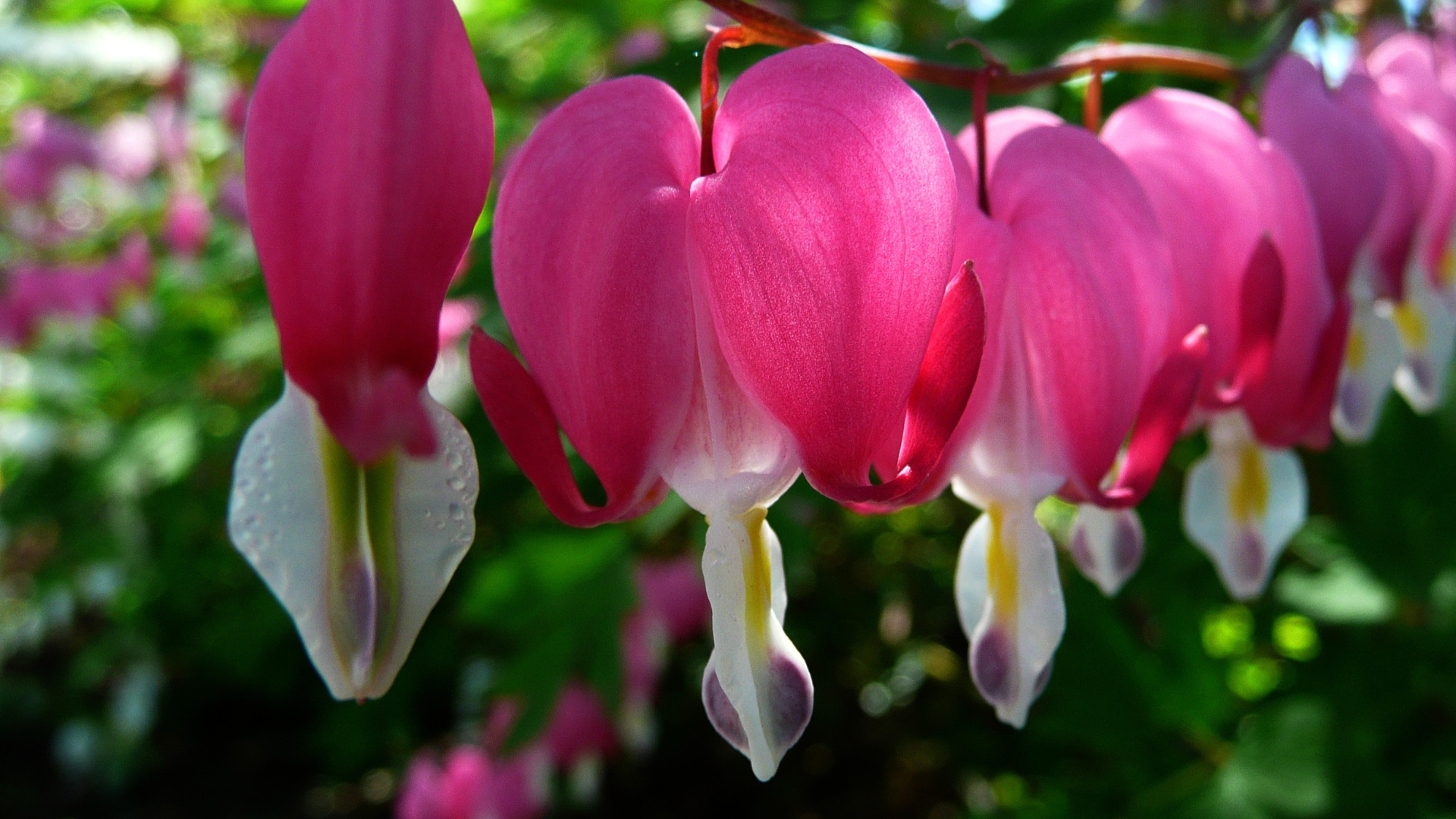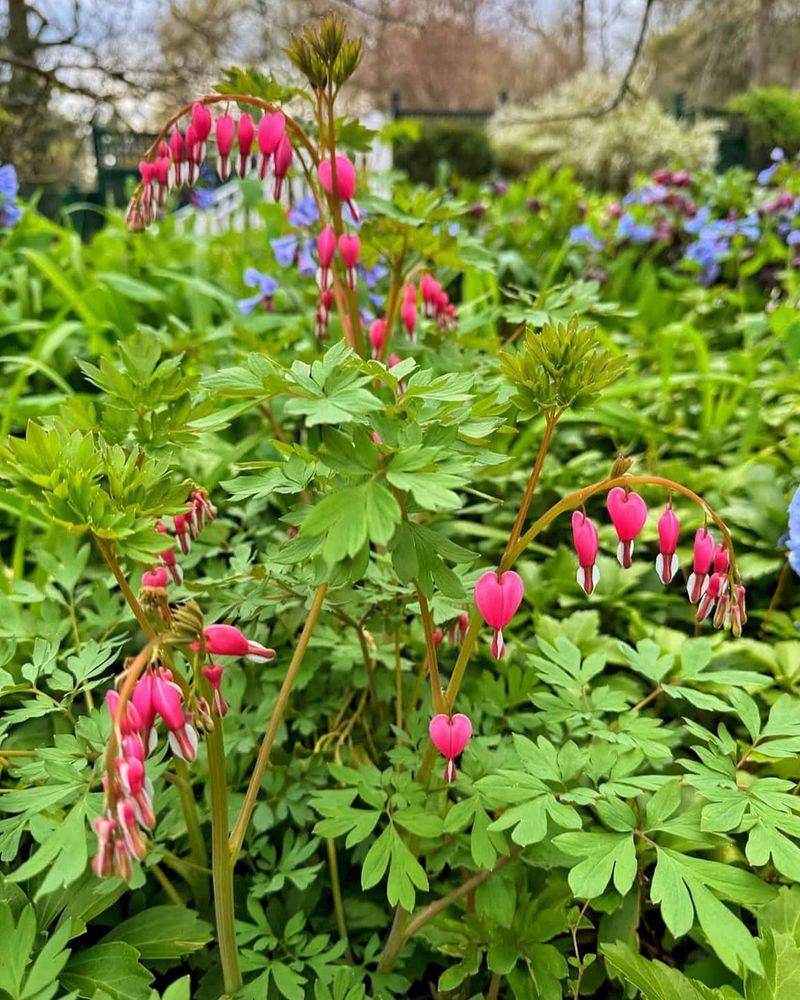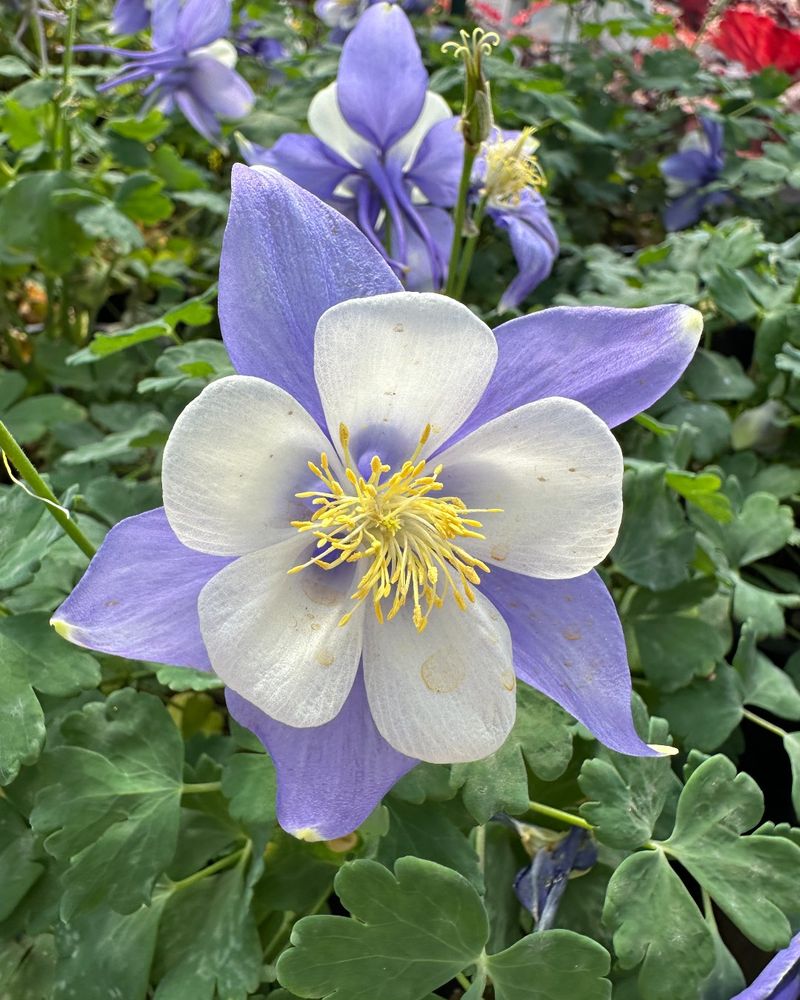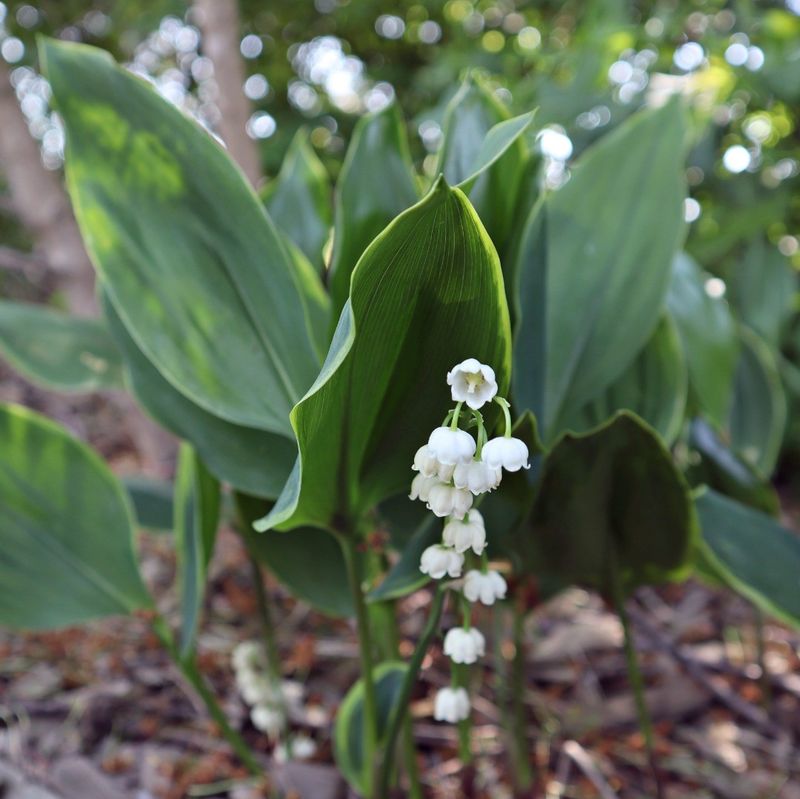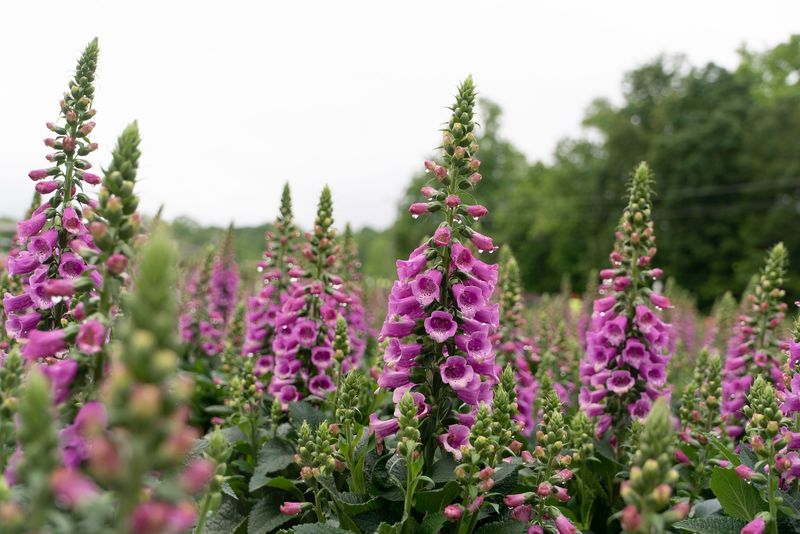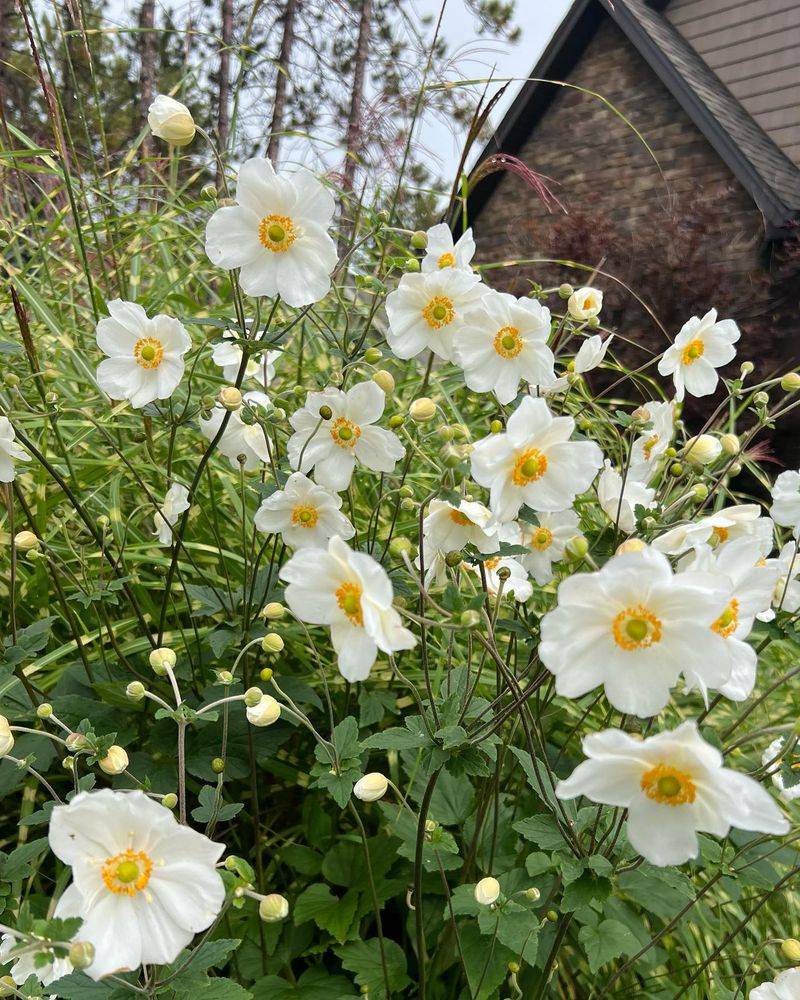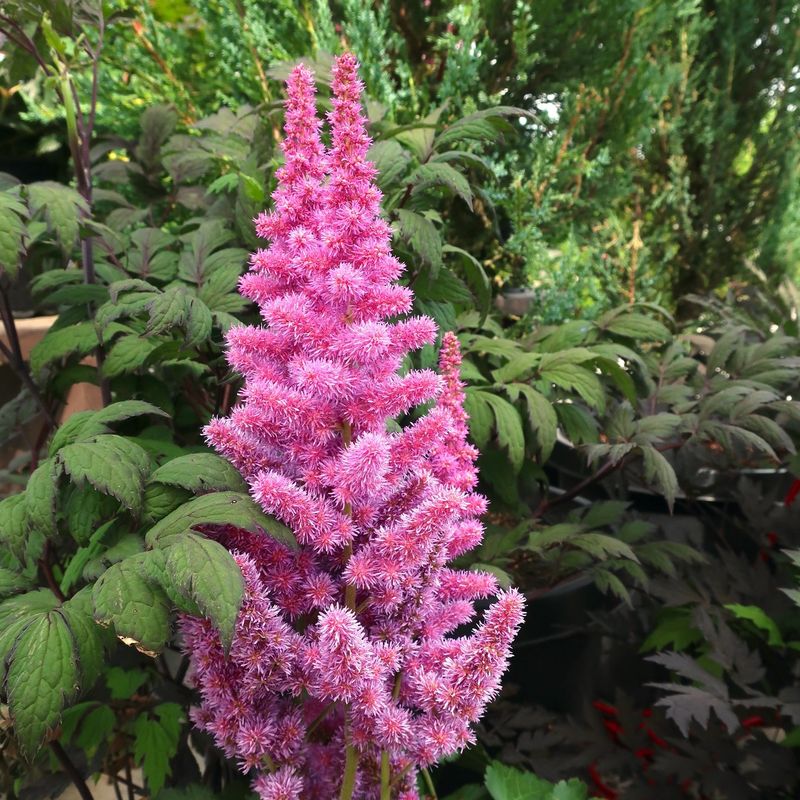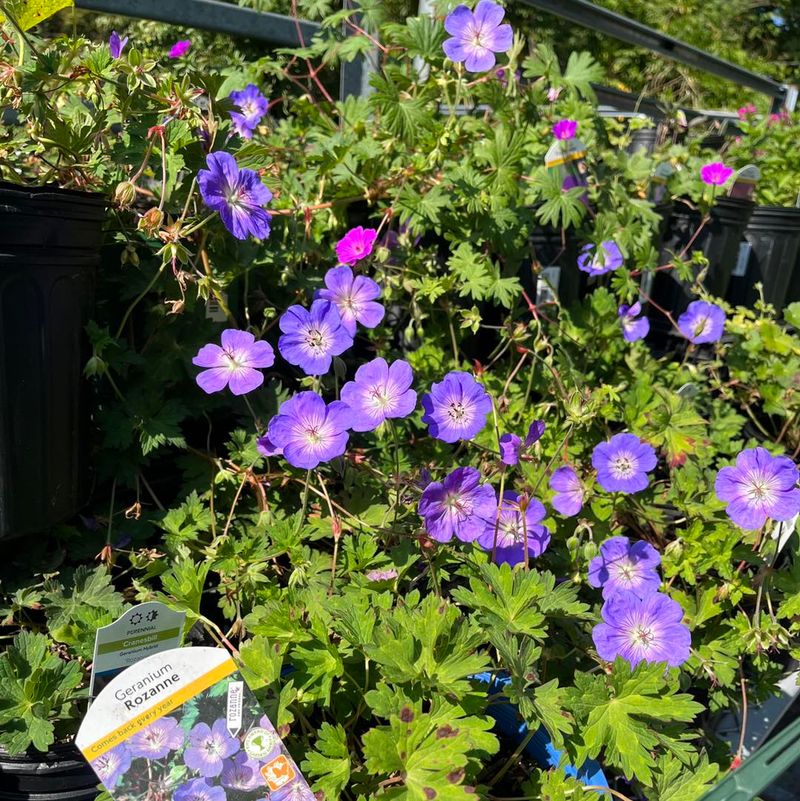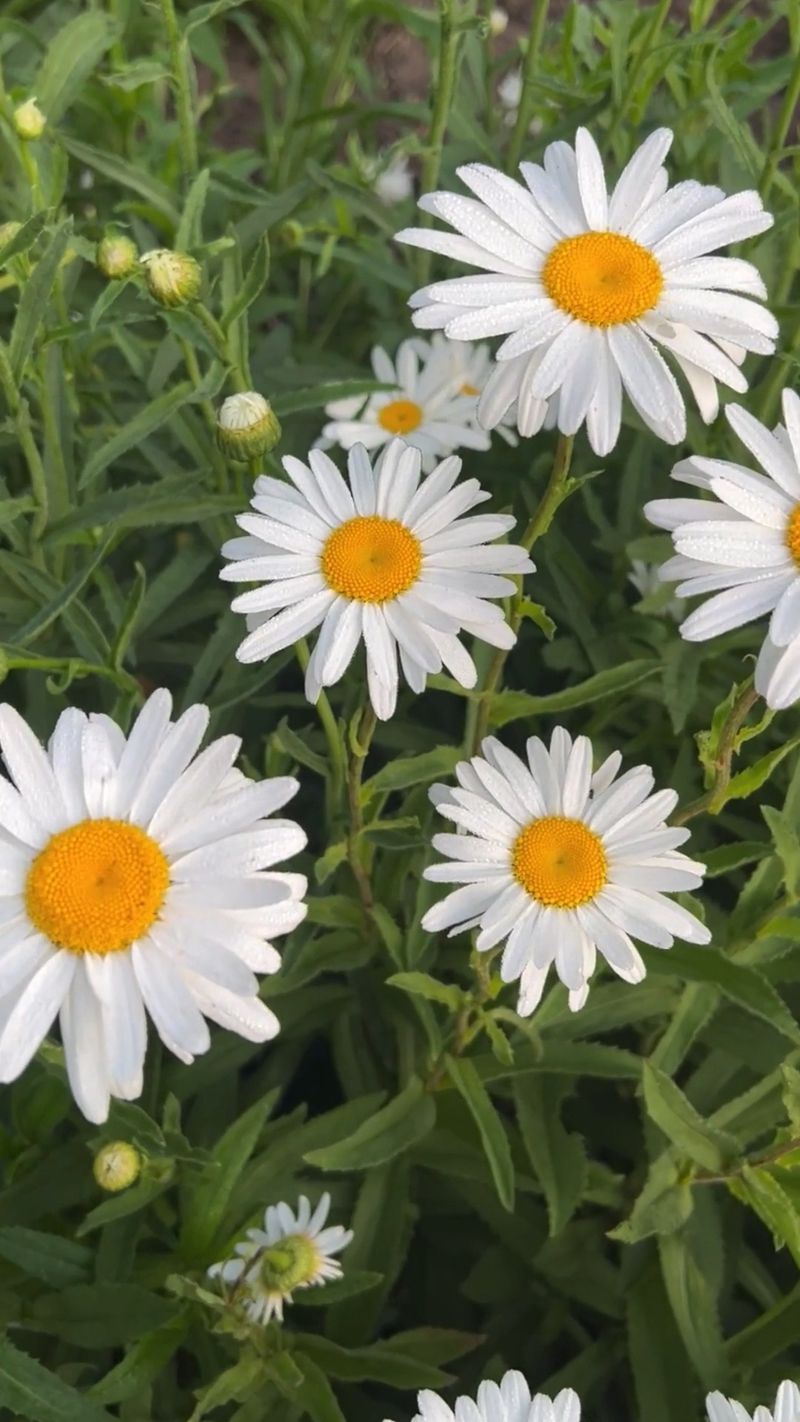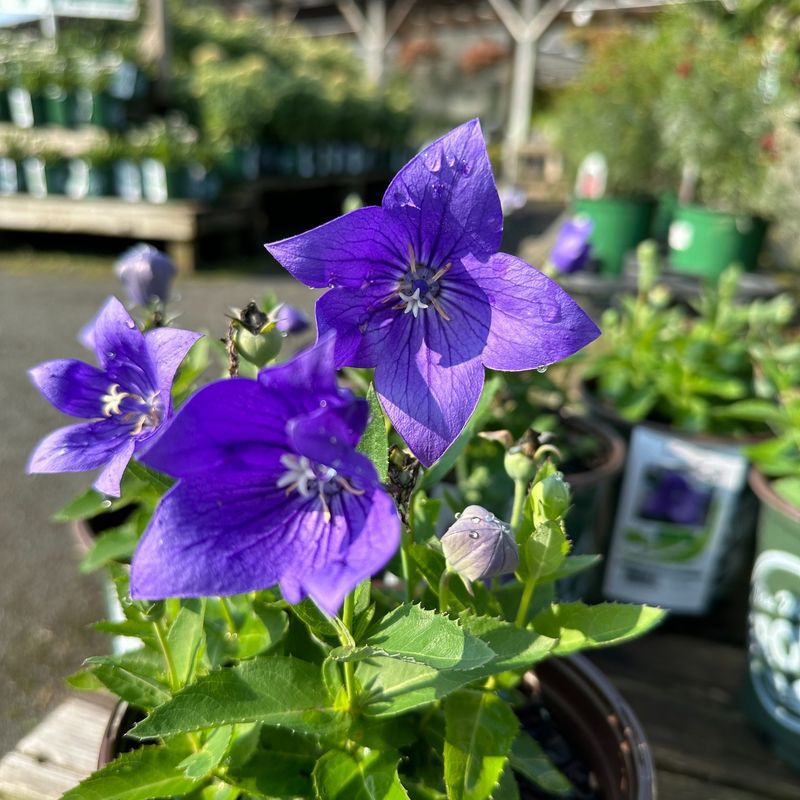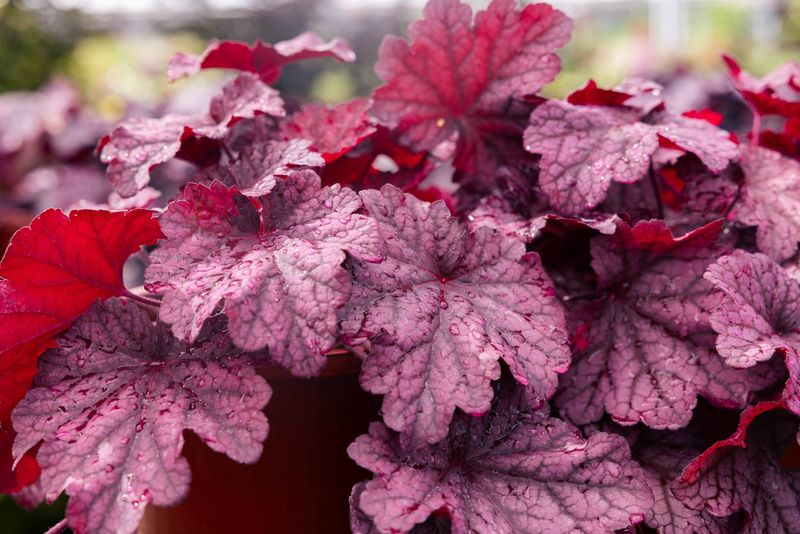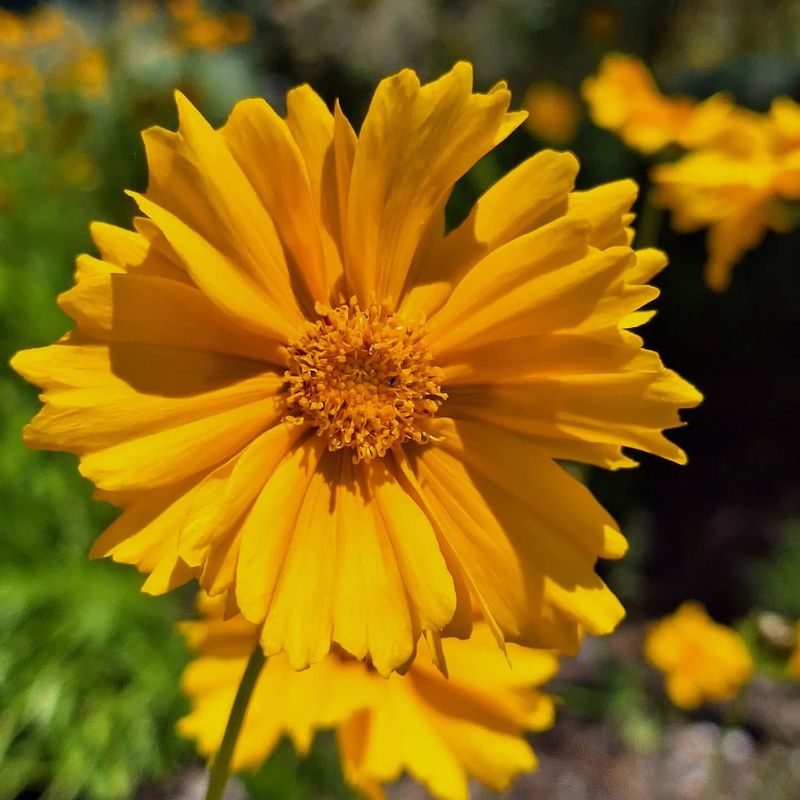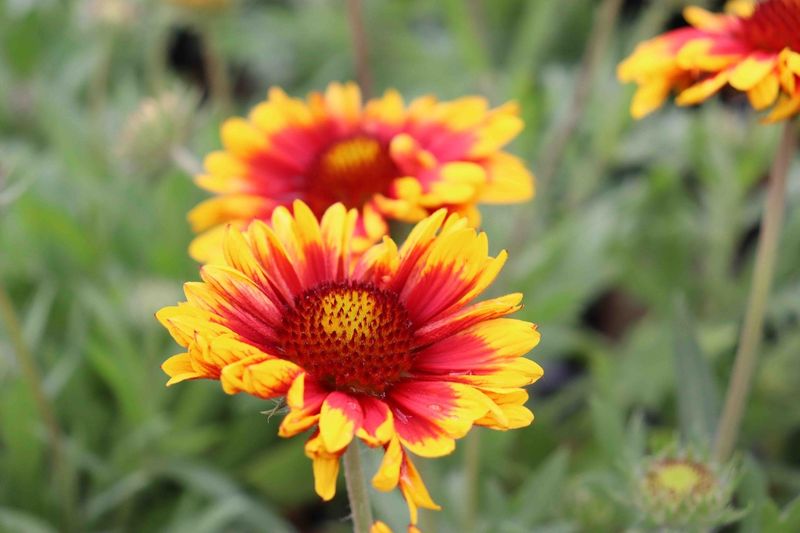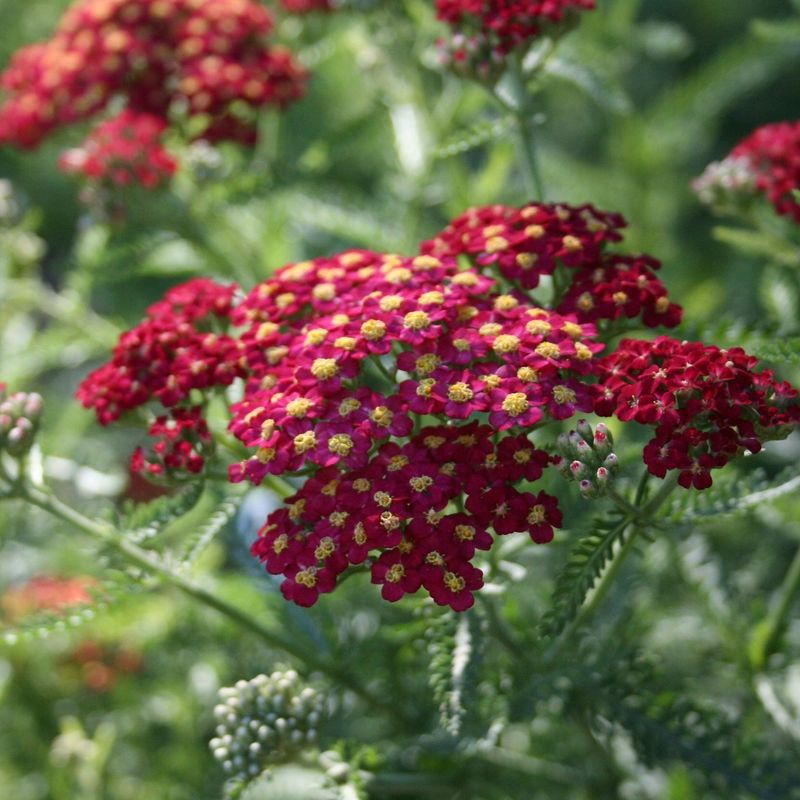Some perennial flowers aren’t as great at keeping weeds at bay as we’d like them to be. These flowers often have more open spaces or slower growth, making them prime targets for weeds.
While they’re still beautiful additions to any garden, they won’t save you from extra weeding. Here are a few perennial flowers that tend to struggle against weeds and won’t do much to help you cut down on that garden work.
1. Bleeding Heart (Dicentra)
Spring gardens shine with the arching stems of bleeding hearts and their dangling heart-shaped blooms. Unfortunately, these woodland beauties go dormant by mid-summer, leaving behind bare patches that quickly fill with opportunistic weeds.
The early season growth habit means bleeding hearts aren’t around to compete when most weeds hit their stride. Smart gardeners plant companions nearby to fill in later, but this requires careful planning. Without strategic planting, you’ll face bare spots that become weed magnets by July, requiring regular attention to keep tidy.
2. Columbine (Aquilegia)
Wild and whimsical, columbines charm with their unique spurred flowers, but they’re lightweights in the weed battle. After flowering, these spring bloomers often look ragged and provide little ground coverage during the peak growing season.
Columbines self-seed readily, which sounds helpful until you realize they’re competing with themselves as much as with weeds. Their delicate foliage and relatively sparse growth habit create plenty of opportunities for weeds to establish. While you’ll enjoy their dancing blooms in May, you’ll spend June through October pulling unwanted plants from their vicinity.
3. Lily of the Valley
Those sweetly scented bell-shaped flowers might seem like perfect groundcover candidates, but lily of the valley has a secret – it’s surprisingly ineffective against many common weeds. Despite forming colonies, it leaves gaps where persistent invaders can establish.
The plant’s growth pattern creates a network rather than a solid mat, allowing weeds to push through. Its early spring emergence and relatively early dormancy create windows of opportunity for weeds. Ironically, while lily of the valley itself can become invasive in some gardens, it still won’t outcompete aggressive weeds like dandelions, crabgrass, or bindweed.
4. Foxglove (Digitalis)
Dramatic and statuesque, foxgloves create vertical drama but leave plenty of open soil for weeds to colonize. As biennials or short-lived perennials, they create inconsistent coverage, with bare patches appearing as plants complete their lifecycle.
The rosette growth habit of first-year plants does little to shade out competitors. Even mature flowering specimens have an upright form that doesn’t block light from reaching the soil surface. While foxgloves self-seed readily, this sporadic reproduction pattern creates an unreliable defense against weeds, requiring gardeners to continuously monitor and clear unwanted growth.
5. Japanese Anemone
Late-season stars in the garden, Japanese anemones provide welcome fall color but struggle against summer weeds. Their slow spring emergence gives aggressive weeds a significant head start, allowing unwanted plants to establish before anemones reach full size.
The loose growth habit creates plenty of gaps where opportunistic seedlings can take hold. While eventually forming clumps, Japanese anemones take several years to fill in properly. Gardeners often find themselves repeatedly weeding around these autumn beauties throughout the growing season, especially in the early years after planting.
6. Astilbe
Feathery plumes make astilbes standouts in shady spots, yet these moisture-loving perennials offer little resistance to determined weeds. Their preference for rich, damp soil creates perfect conditions for weed seeds to germinate and thrive alongside them.
Astilbes typically form clumps with space between plants where weeds easily establish. Their relatively shallow root systems can’t outcompete deep-rooted invaders. Regular monitoring becomes essential, especially during establishment years. Despite their eventual size, astilbes never create dense enough growth to fully shade out competitors, making them high-maintenance choices for gardeners seeking lower-effort plantings.
7. Hardy Geranium (Cranesbill)
Often recommended as ground covers, many hardy geraniums actually perform poorly against aggressive weeds. Varieties with an open, airy growth habit leave plenty of bare soil visible, creating opportunities for unwanted seedlings to establish and thrive.
While some spreading types offer better coverage, most hardy geraniums form discrete clumps with ample space between plants. Their relatively shallow roots can’t outcompete deeper-rooted weeds for nutrients and moisture. Even the most vigorous varieties require regular weeding during establishment, and many never fully suppress persistent weeds like creeping Charlie or quackgrass.
8. Shasta Daisy
Cheerful white blooms make Shasta daisies perennial favorites, but their clumping growth habit creates weed-friendly zones between plants. The narrow stems and sparse lower foliage do little to block light from reaching the soil, allowing weed seeds to germinate easily.
Shasta daisies are relatively slow to spread, meaning years can pass before they form dense enough clumps to offer any weed resistance. Their upright rather than spreading growth pattern leaves the surrounding soil exposed. Despite their carefree appearance, these classic perennials require regular weeding throughout the growing season to maintain their pristine look.
9. Balloon Flower (Platycodon)
Late to emerge each spring, balloon flowers leave garden space vulnerable to early-season weeds that establish while these perennials are still underground. By the time their distinctive buds appear, you’ll likely be dealing with well-rooted invaders that require careful hand-weeding.
The upright growth and relatively narrow footprint of balloon flowers means they never create enough shade to suppress neighboring weeds. Their slow-spreading habit ensures they remain in distinct clumps rather than forming weed-resistant mats. Despite their charming flowers and reliable nature, balloon flowers contribute little to reducing garden maintenance.
10. Coral Bells (Heucherella)
A hybrid between heuchera and tiarella, heucherellas offer beautiful foliage but minimal weed suppression. The mounding habit creates distinct plants with open soil between them – perfect landing spots for windblown weed seeds.
While their leaves form attractive clumps, they don’t spread to create dense coverage. The relatively slow growth rate means weeds often outpace them, especially during the establishment phase. Despite marketing claims about their ground-covering abilities, most heucherellas never form tight enough mats to effectively crowd out competing weeds, leaving gardeners with regular maintenance chores.
11. Bee Balm (Monarda)
Beloved by pollinators, bee balm’s upright growth habit unfortunately creates the perfect environment for weeds to flourish beneath its stems. The plant’s relatively bare lower portions provide little shade to suppress unwanted seedlings, allowing them to establish and compete for resources.
While bee balm spreads over time, it does so in a patchy pattern that leaves gaps for opportunistic weeds. Its susceptibility to powdery mildew can further weaken its competitive ability during humid summers. Despite its eventual size and spread, this popular native perennial requires regular weeding, especially during its first few seasons.
12. Coreopsis
Sunny yellow blooms make coreopsis a cheerful addition to gardens, but many varieties lack the dense growth needed to outcompete weeds. The open habit of taller varieties creates plenty of exposed soil where weeds readily germinate and establish themselves.
Even thread-leaf types that appear fuller still allow persistent weeds to push through their delicate foliage. Most coreopsis spread slowly, taking years to form truly dense patches. Their relatively short lifespan (many need replacing after 3-4 years) means they never establish the robust root systems needed to effectively crowd out competing plants.
13. Gaillardia (Blanket Flower)
Drought-tolerant and colorful, gaillardias seem like tough garden contenders, but their open growth habit provides minimal weed suppression. The sparse basal foliage leaves plenty of exposed soil where unwanted seedlings can easily establish and thrive.
Many blanket flower varieties are short-lived perennials, meaning they lack the extensive root systems needed to effectively compete with established weeds. While they self-seed readily, this sporadic reproduction creates inconsistent coverage. Despite their tough-as-nails reputation for handling poor soil and drought, gaillardias offer little help in reducing your weeding chores.
14. Yarrow (Achillea)
Often praised for its drought tolerance, yarrow nonetheless struggles against established perennial weeds. While eventually forming clumps, many varieties grow too slowly to outpace aggressive competitors during their establishment years.
The feathery foliage looks dense but actually allows plenty of light to reach the soil surface, enabling weed seeds to germinate. Taller varieties with their upright growth habit leave even more exposed ground. Though yarrow can spread over time, it rarely forms tight enough mats to fully exclude persistent weeds like dandelions or quackgrass, requiring ongoing monitoring and maintenance.
15. Delphinium
Tall spikes of vivid color bring drama to summer borders, but these cottage garden classics offer little help when it comes to weed suppression. Their narrow form and widely spaced foliage leave plenty of soil exposed, creating ideal conditions for weeds to move in.
The slow spring growth gives aggressive weeds a head start, and even mature clumps never form a dense barrier. While delphiniums add striking height and elegance, they demand regular weeding to stay picture-perfect—making them high-maintenance guests in weed-prone gardens.

